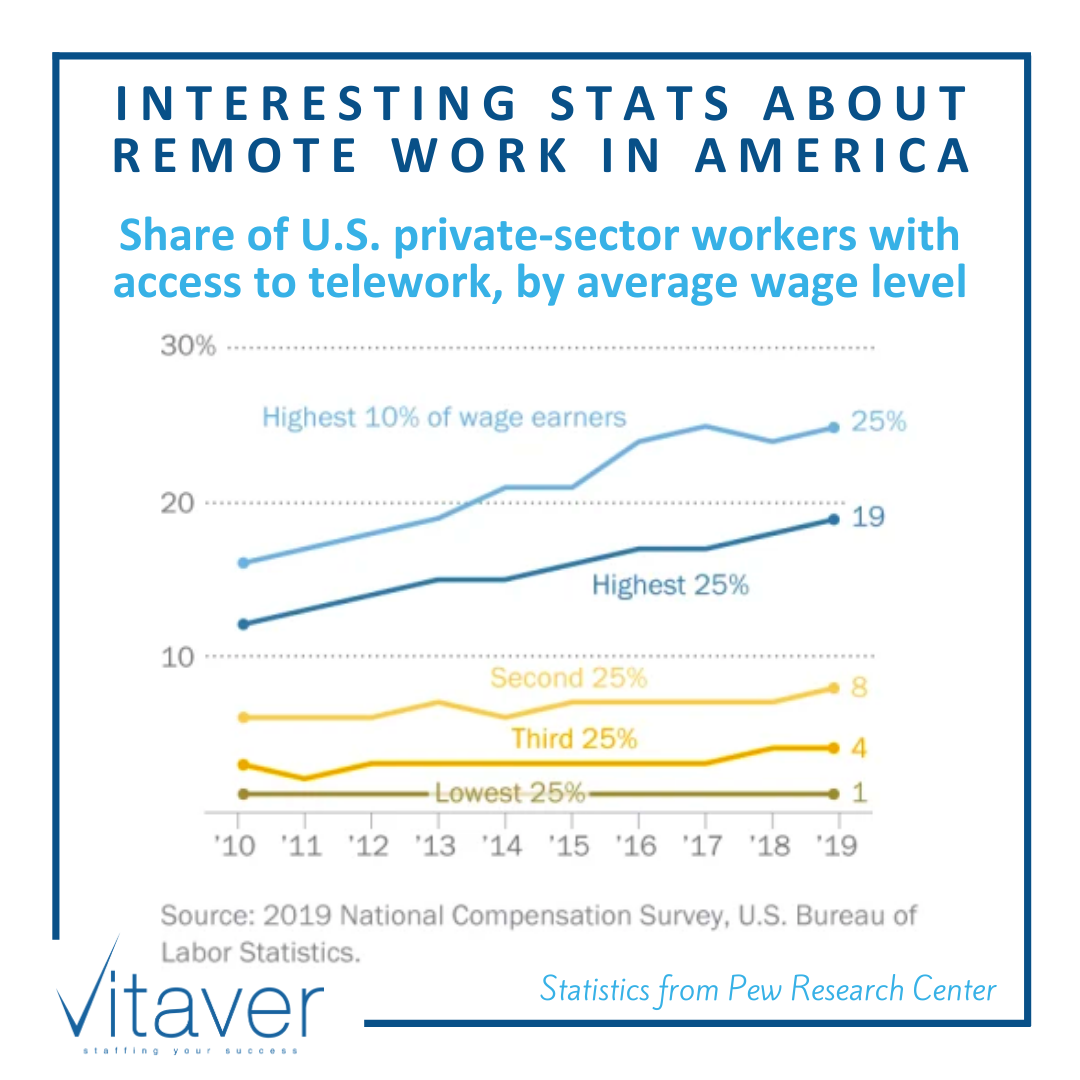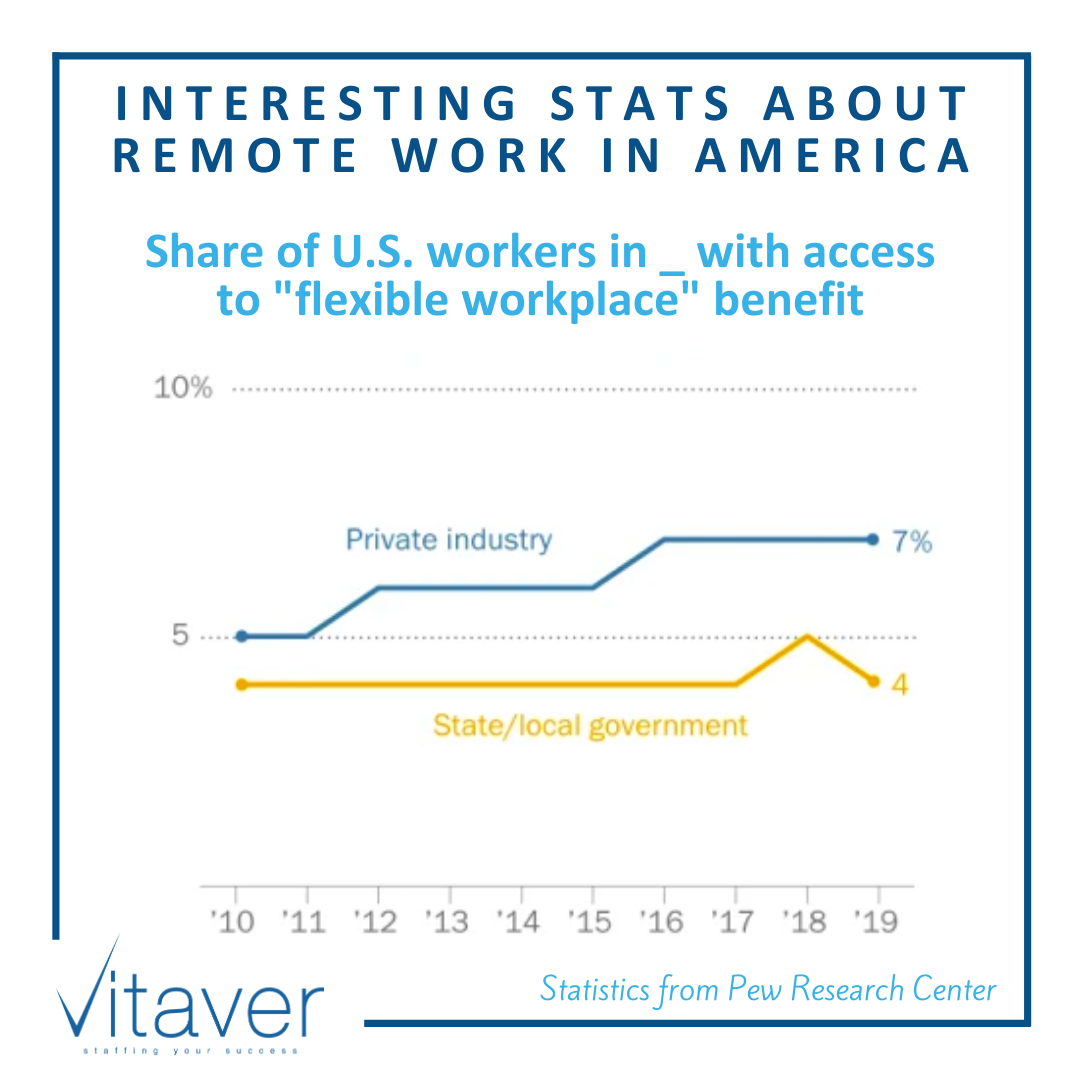Interesting Stats About Remote Work in the USA
29 April 2020

Interestingly enough, remote work isn’t as widespread in the U.S. as one might think.
Only 7% of civilian workers, which is roughly 9.8 million of the nation’s approximately 140 million civilian workers, have access to a “flexible workplace” benefit according to the 2019 National Compensation Survey (NCS) from the federal Bureau of Labor Statistics. And according to the stats those workers who do have access to it are mostly managers and most of those professionals are also highly paid.
Another interesting fact is that actually remote work is much more popular in other countries of the world than it is in the U.S. For example, a 2016 Swedish study found that “telework has become routine for over 20% of all gainfully employed” in that country. And a 2017 study of 30 European countries found that 23% of Danes, 21% of Dutch and 18% of Swedes worked from home “at least several times a month.” The lowest work-from-home rates in that sample, 6% in Bulgaria and Cyprus, were similar to the ones in the U.S.





We wonder how will those numbers change after the current situation the whole world was forced into? Are they likely to rise? Will people get a taste of work-from-home life and not want to go back to their office routine? Or will they enjoy more than ever their office life after being forced into stay-at-home captivity? Perhaps, only time will tell.




